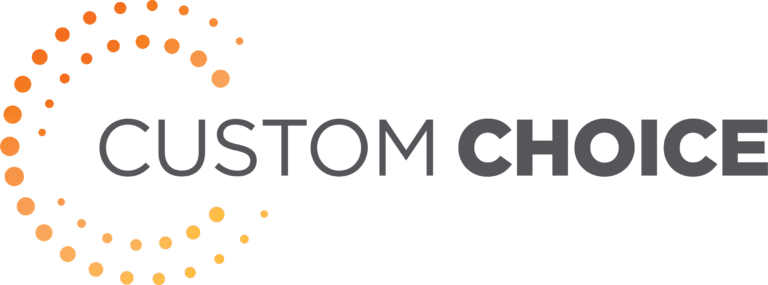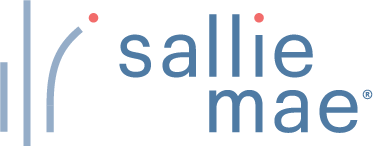Our goal is to give you the tools and confidence you need to improve your finances. Although we receive compensation from our partner lenders, whom we will always identify, all opinions are our own. Credible Operations, Inc. NMLS # 1681276, is referred to here as "Credible."
Federal financial aid can be a big help in paying for your higher education. But filling out the FAFSA — the Free Application for Federal Student Aid — isn’t a guarantee you’ll have enough money for all of your expenses while you’re enrolled in a college or university. You may need to find additional funding for your food, housing, unexpected costs, books, or school supplies — and it’s not always easy.
We’ll go over ways you can find extra money to meet all of your higher education expenses once your tuition is paid.
In this post:
Options for paying for college expenses
Depending on your financial situation, you may have several options that can help you meet your expenses while enrolled in school. Here are a few strategies that you could explore.
Talk to your school’s financial aid office
Colleges and universities have a significant incentive to keep students enrolled in school. That means the financial aid office can be a tremendous resource if you’re struggling to make ends meet while enrolled in school. They may be able to direct you to scholarships and grants, work-study jobs, or other types of resources that can give you the money you need to pay for your expenses.
Financial aid offices may also be able to set up a tuition payment plan for you, where you pay in installments rather than a lump sum. This may be able to help you budget more effectively and reserve money for your living expenses.
If your financial situation changes, you may also be able to request that your circumstances be reevaluated. For example, a parent losing a job may change how much financial aid you qualify for. Your school’s financial aid office should be able to tell you if this is an option for you.
Search for additional in-school grants and scholarships
You don’t have to stop looking for scholarships once you begin school. You can continue to look for local or national scholarship and grant programs that can help you fund your education. Scholarships and grants are considered gift aid that you won’t need to pay back. Your college’s financial aid office may be able to point you in the right direction.
- Your local or state government
- Religious institutions
- Your parents’ employers
- Community or fraternal organizations, like a rotary club
When applying, make careful note of all deadlines and requirements. Scholarships are often based on merit, and you may need to provide transcripts or write essays as part of your application. Make sure to leave yourself enough time to gather the information you need and write a stellar essay.
Keep in mind that many scholarship programs do not allow you to use the money you receive for general living expenses. In many cases, scholarship money is paid directly to the school for your tuition. But this can free up money from other sources — like your family’s out-of-pocket contribution — that you can then use to help with your day-to-day living expenses while in school.
Finding scholarships and grants may become easier once you declare a major. Your academic department may have scholarships, grants, or other programs designed to help outstanding students in your field pay for college.
Get a work-study job
Work-study is an optional component of federal financial aid packages that can be a tremendous help in meeting living expenses while enrolled in school. Under the Federal Work-Study Program (FWS), you take a part-time job with your educational institution or a nonprofit near campus.
This can make it convenient to get to work and manage your schedule around your classes. You’ll receive a paycheck just like any other employee, earning money that you can use for your expenses while in school.
Universities must pay their work-study employees at least monthly, with undergraduates paid by the hour and graduate students paid either hourly or on salary. Unless you direct your school otherwise, paychecks come directly to you.
Unlike with a regular job, you won’t need to worry about your work-study interfering with your academics: Employers must take your class schedule into account when setting your work hours.
Even if you don’t qualify for Federal Work-Study, you may still be able to land a part-time job on or off campus. You won’t have the formal protections that the federal program provides, but most employers in a college town are used to working with student schedules. You may be able to find a work arrangement that suits your needs.
Private student loans
Once you’ve exhausted all of your federal financial aid, private student loans can be a great way to fill in the gaps. These student loans are issued by banks and other financial institutions and can be used to pay for any of your living expenses while enrolled in a college or university.
Your private student loan may have a fixed interest rate or a variable interest rate, and your loan term can vary from as short as a few years to as long as 10 years or more. Most private lenders also allow you to defer payments until after you graduate.
They don’t have the same generous repayment plans as federal student loans, but private student loans are often more flexible and can even be cheaper than the government-subsidized alternative.
The rate you pay on a private student loan typically depends on your credit score. Higher credit scores generally mean lower interest rates.
If you’re a first-time undergraduate without much of a credit history, you may need to find a cosigner with good credit in order to qualify — like a parent, grandparent, or close family member. Cosigners agree to be equally responsible for paying back the loan.
Credible lets you compare private student loan rates from multiple lenders, all in one place.
The companies in the table below are Credible’s approved partner lenders. Whether you’re the borrower or cosigner, Credible makes it easy to compare rates from multiple private student loan providers without affecting your credit score.
| Lender | Fixed Rates From (APR) | Variable Rates From (APR) |
|---|---|---|
 | 3.69%+10 | 5.66%+10 |
|
||
 | 3.99%+1 | 5.5%+ |
|
||
 |
3.59%+2,3
| 5.34%+2,3 |
|
||
 | 4.24%+ | 4.97%+ |
|
||
 | 4.8%+8 | 7.77%+8 |
|
||
 | 5.75%+ | N/A |
|
||
 | 3.490%9 - 15.49%9 | 5.04%9 - 15.210%9 |
|
||
Lowest APRs reflect autopay, loyalty, and interest-only repayment discounts where available. Prequalified rates are not an offer of credit. | 10Ascent Disclosures | 1Citizens Bank Disclosures | 2,3College Ave Disclosures | 11Custom Choice Disclosures | 7EDvestinU Disclosures | 8INvestEd Disclosures | 9Sallie Mae Disclosures |
||
How to apply for private student loans
To get the best deal on a private student loan, follow these steps.
-
- Determine how much you need. Evaluate how much federal financial aid you have access to, as well as any scholarships and grants. Compare that with the total cost of attending your college or university. Your school’s financial aid office can likely help you do this.
- Check your credit score. You can request free copies of your credit reports from the three major credit bureaus — Equifax, Experian, and TransUnion — once each year using the site AnnualCreditReport.com.
Examine your credit score and the report as a whole, carefully searching for any errors. If you find a mistake, such as an incorrect account balance or an account listed as past due that’s actually current, you can dispute the information with the credit bureau and have it corrected.
This can help boost your score. With your credit report in hand, you can determine if you are likely to qualify for a private student loan on your own or if you should look for a cosigner.
In most cases, you’ll need a credit score of at least 670 to qualify for a private student loan. But with a score in this range you may pay high rates. A cosigner with excellent credit can significantly reduce the amount you’ll need to pay.
- Prequalify for loans. Find a handful of lenders that offer private student loans that may work for you, then get prequalified. In most cases, this is a simple process that can be done completely online.Generally, you’ll provide some personal information and your Social Security number. Your lender will run a quick credit check and potentially extend you an offer.
- Compare your offers. Once you have your loan offers in hand, you can compare them to see which of them has the best terms for you. It’s vital to secure at least a few different loan options to make sure you’re getting the best deal. As you evaluate your private student loan offers, look at:
- The interest rate: This is your cost of borrowing money. The higher the interest rate, the higher your monthly payment will be and the more you’ll pay in interest over the life of your loan. Many loan offers will use APR, a broader measure that includes the interest rate and any fees included in your loan. You can easily compare APRs from one loan to the other.
- Fees: Your loan may come with an origination fee or other types of fees that drive up your costs. Make sure to note any required fees in the loans you’re considering.
- Loan term: This is how long you have to pay back your loan. The longer your loan term, the lower your monthly payment will be — but the more you’ll ultimately pay in interest. Make sure the loan you choose has a loan term that gives you an affordable payment schedule. A student loan calculator can help you do this.
- Repayment plans: If you want to defer payments until after you graduate, make sure the loan offer you’re considering gives you this option. You can also determine if your loan will allow you to make interest-only payments while in school to help reduce your costs. Talk to your lender to get answers on repayment terms to ensure a good fit.
- Cosigner release policy: If you need a cosigner on your student loan, this person may not want to be attached to your loan forever. Many private student lenders have policies that allow cosigners to be removed from the loan once the student graduates and establishes his or her own credit history.
- Accept your private student loan. Once you’ve picked out the best loan offer, your lender will give you instructions on how to complete a full loan application and accept your loan money.
You may choose to have loan money sent directly to your school or deposited into your bank account. If you need to use the private student loan for your living expenses, you may want to have the money sent to you rather than your school.




